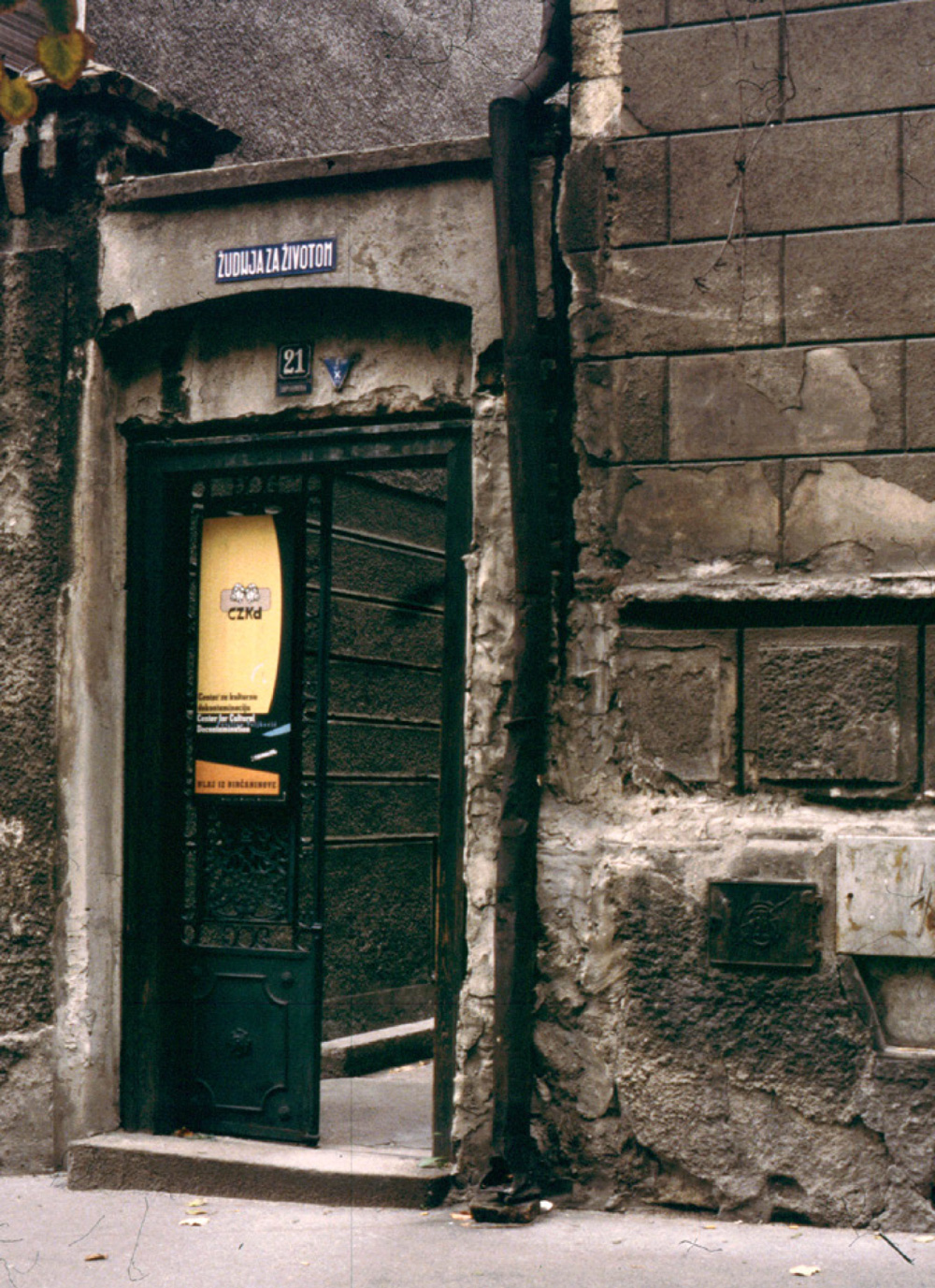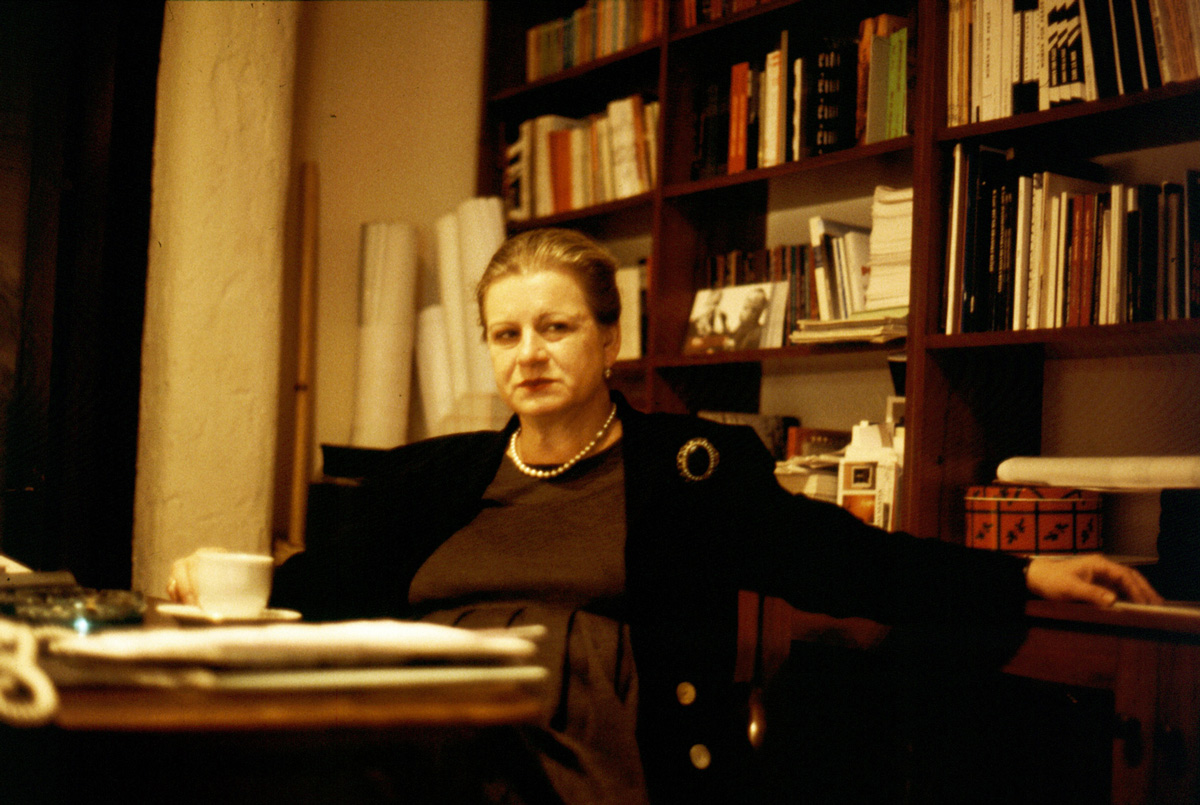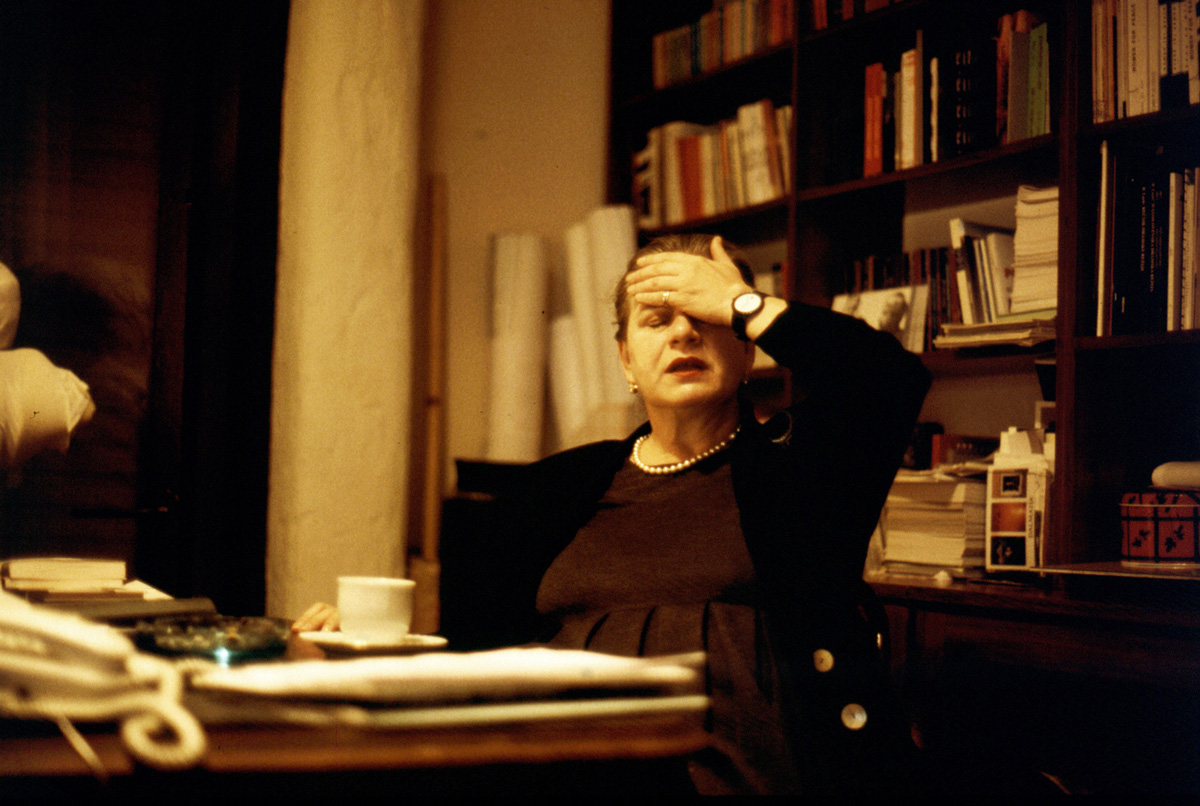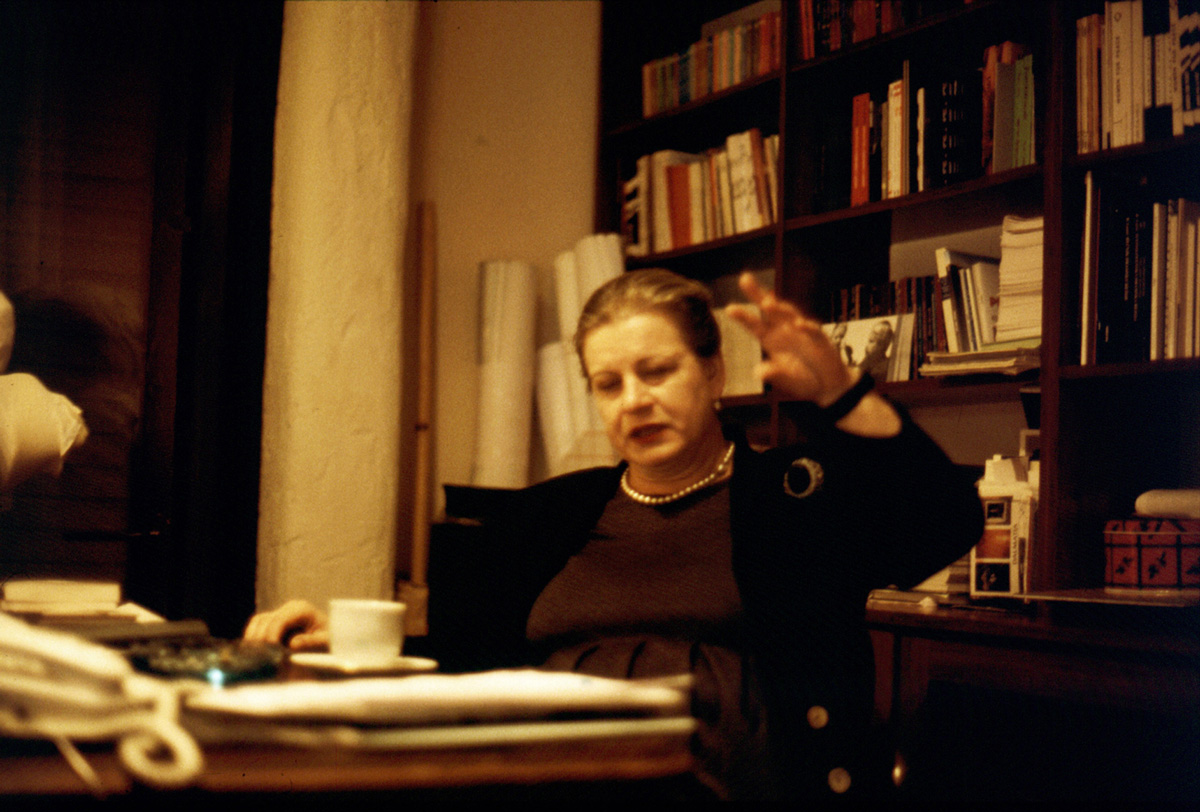Nationalism and Catharsis
The Center for Cultural Decontamination, Belgrade
Srdjan Jovanovic Weiss and Vladimir Kulic

According to a rare press release, the Center for Cultural Decontamination (CCD) in Belgrade is “an independent cultural institution that has worked since 1993 to revive the liberal spirit of the arts and public discourse under the impossible conditions of war, economy, politics, and the heavily suppressed human spirit of the last decade in Yugoslavia.” Given these conditions, it is therefore surprising to read in the next sentence that since acquiring its own space in Belgrade five years ago, the Center has organized more than 1,000 exhibitions, performances, and public events (at a rate of two events every three days). As we read on, “The main aim of the Center is to transform the social atmosphere that has been contaminated by orchestrated nationalism, hatred, and destruction.” After noting that the Center does not belong to any political party in Serbia, the press release informs us that “cultural decontamination is about catharsis,” which a dictionary defines as the “purging of emotions through a work of art,” or, in psychological terms, as the “discharge of repressed or pent-up emotions resulting in the alleviation of symptoms or the elimination of the condition.”
For a society that continues to operate on what the CCD calls contaminated patriotism, the call for decontamination means something very different than it would for someone in the US or Western Europe. Recent philosophical and cultural debates in Western Europe and the States on the rhetoric of decontamination have usually focused on the fear of contamination from a purported external source of impurity. In the American context, for example, the language of decontamination was invoked by the right wing during the Cold War to provoke the fear that communism was threatening to taint the pure American national psyche. Opposed to this is the alternative view that there is no pure inside to begin with—that all cultures are always already impure—and that the drive toward decontamination is a symptom of a paranoid psyche invested in a dangerous fantasy of purity. From this alternative viewpoint, contamination is the valorized term, one that signals the desire to move beyond the temptation to identify a purely good self and a purely evil other.
But what would the rhetoric of decontamination mean in the inverse case, when parts of ‘the inside’ see the inside itself as infectious, and a relationship to the outside as the relief? During the Milosevic era, Yugoslavia was labeled a prison not only by the political opposition now in power but also by the cultural community that refused to be associated with the regime. Whatever contamination might mean in the West, in a former communist country with a pro-liberal past the term was turned inside-out into a synonym for nationalism itself.
Within the context of institutionalized nationalism, the CCD had to have a bi-focal program: an activist agenda alongside the original focus on the arts. For example, during the 1996-97 student demonstrations in Belgrade, the Center supported the strike among theater professionals. This initiative sparked fierce discussions among actors and directors as to whether they should continue to mount productions or not. The CCD has published one of these discussions, full of differing articulations and opinions, as a pamphlet in the very form of a drama.
The CCD program is open to almost any art form, although the focus falls on theater and performance. This is logical because prior to founding the CCD, Borka Pavicevic served as a principal of the Yugoslav Drama Theater. She was ousted from that position by Milosevic’s apparatchiks on political grounds. The CCD, established shortly after the nationalist purge in the state institutions, became the space for some forms of theater that were banned (along with their producers) from official theaters. Two examples include Macbeth/It, a dance and drama production directed and choreographed by Sonja Vukicevic; and more recently About Germany, a theater performance based on the writings of Bertolt Brecht, Hermann Broch, Volkmar Von Zuelsdorf, and Hannah Arendt about post–World War II Germany, that was written and directed by Ana Miljanic.
The center’s activities in theater, art, and politics were seen as oppositional from the very beginning. The opposition was directed not at reactionary drama but at a whole way of thinking that for the last decade had valorized Serbian nationalism. Although a justified fear of the regime’s reactions made directors wary of producing content that was transparently anti-Milosevic, there were also direct attacks. For example, the Center organized an exhibition of drawings by Bogoljub “Maki” Arsenijevic, who escaped from jail where he was imprisoned for organizing protests against Milosevic’s regime. On opening night, a letter arrived from the author, whose drawings had been done on the covers of prison library books. It had been written that day and was the first sign of the runaway political prisoner. Or take the production called Combed Singer by Petar Lukovic, an eminent journalist who started publishing extremely witty anti-war articles in the early 90s. Appearing on stage were characters representing Radovan Karadzic, Biljana Plavsic, Milosevic, his wife, as well as other people accused of war crimes by the International Tribunal in The Hague.
Situated in the row of foreign embassies in the center of Belgrade, CCD operates from a 1920s building that was originally a private art gallery for “European Art” built by an influential family shortly after the end of World War I. The Center decided to keep the original gallery name, “Pavilion Veljkovic,” in memory of the family. It is Monday, 9 October 2000, four days after the fall of Milosevic and what is known as “The Bulldozer Revolution.” We are at the Center to pose some questions to Borka Pavicevic, the Center’s founder and director, and Ana Miljanic, program director and the Center’s most active theater director.
Srdjan Jovanovic Weiss and Vladimir Kulic: Before coming here we were wondering what we should talk about, especially given what has been happening in Belgrade in the last couple of days. Our editor in New York, who had heard about the Center, had thought it was called the Center for Cultural Contamination, not Decontamination. What made you choose this term?
Borka Pavicevic: The first time that the concept of decontamination became public was during the student demonstrations of 1996-97 in Belgrade. The students came to the center of the city where Milosevic’s socialists held a counter-rally and the students “decontaminated” the city from the counter-rally by cleaning the streets with soap. That was the first time that the public understood what our center was about and that what is going on around us is not because of us but because of the Milosevic regime. I remember that many people called us during the students’ “decontamination” of the streets with the soap, and they told us: “Now we understand what you want to say.”
Considering the recent political changes and the fact that “decontamination” will hopefully now become a general orientation, do you think you should shift direction and change the name?
BP: No, no, no! Because you still have the contamination of culture coming through the nationalist mythology, through nationalist parties, and so on. For example, the great contamination of patriotism is that the Serbs lost the Kosovo battle in the 14th century, which turned into the myth that we were born to become the victims of history and that the whole world is prosecuting us because of that.
Ana Miljanic: I think that our goal for the future will be to act as a critical institution that will not just oppose current cultural models or paradigms but also promote other values that are neglected. I think that it remains an important question whether this politically awakened citizenry will continue to be present as a political force in this transition period. This will be our major task: not to let them go home and mind their own business while the “professionals” run the country. I think a good sign of this is the decision of the student group Otpor [Resistance] to stay in opposition to Kostunica and promote this as their future agenda.
Promoting is about selling something to somebody, even if it’s something as complex as the feeling of collective guilt. What do you think of the idea of trying to deliver manifestos to the public?
AM: If you have a group of artists, historians, or art historians saying that our cultural life is awful and kitsch and explaining the roots of this, you are doing some-thing which is quite important. But that’s different from proposing what kind of values should be promoted. The question is: Should we just import culture from Europe and the world that has money, or did we have in our past some traditions, weak or not, which actually functioned as links to the world? If you are just importing modernism from outside, then you are saying that we were the barbarians, which is not true.



How do you view the responsibility of the intellectual elite for what was happening in Serbia?
AM: In the 80s, cultural workers prepared for the entire nationalist project. It was prepared for in the theater, in architecture, and so on, by the so-called dissidents of nationalist intellectualism [a class that claimed to be a victim of Tito’s Yugoslavia]. They recognized Milosevic as someone who could help them realize their program. Milosevic was a man without ideas, he was a part of the establishment, and was connected with the Army. When the plan failed, first in Croatia, then in Bosnia, and then finally in Kosovo, they decided not to play that card anymore. But Milosevic imagined that since he was in power, maybe he was really important.
BP: I was looking at Milosevic three nights ago on television. The shot was very plain, there was an opening, and he was standing there. There was nothing behind him or anything else and you could see just one ordinary, banal, everyday person. And then you remember 1991 and how he spoke in Kosovo, always speaking like Lenin with large groups there and everybody was marching. Now you see one stupid, average man who has nothing to say, actually.
I remember the reactions when the Center appeared for the first time. There really was not much left of the public institutions that were formerly centers of public interest, and this new center was both welcome and also suspicious to many. The reaction was “Yes, we need a center, but who are these people now?” How was it to do double duty as both an activist center and as a traditional performance space?
AM: I think we will lose one part of our program and I am very happy for it—not because I did not like this program, but because I think that other institutions will take on some of that programming. Very often we were doing the work of public or state institutions, because nobody wanted to collaborate with our state authorities.
Do you still feel like an alternative space, one that’s needed only when something like that happens?
AM: I think what happened in the last ten years in Yugoslavia somehow delivered people who were naturally a part of the mainstream culture or the mainstream educational system to the margins. The Center was born as a bridge between the cultural audience and the intellectual elite but also between marginal alternative projects and the mainstream culture, which no longer had any space to work in. The alternative character mainly meant being an alternative to the national cultural paradigm that was dominant in Serbia.
There is a lot of indoctrination, not only in the quite large segment of the population that voted for Milosevic in the last election, but even among those people who were in the revolutionary crowd just a few days ago breaking into the Federal Assembly building. There are still myths endlessly repeated by the state television, like, “We have to fight for our integrity and sovereignty”; “We must not allow foreign companies inside because they will destroy our economy”; and so on.
BP: Exactly, this is contamination. And it is still alive. The final contamination is when the nation becomes a state and culture becomes a national culture. What does that mean for us? My answer is another question, namely: Which culture can say that it does not stem from many cultures? Is there such a culture as a single culture? Milosevic was talking about the sovereignty of culture and that is why the people are contaminated. The concept of sovereignty is the most conservative 18th-century word from the time when nation-states were first formed. And you have his story about sovereignty, which is supposed to protect you from the outside. This theory of sovereignty functioned like “inner sanctions,” in every sense parallel to the “outside” sanctions, the economic and political embargo imposed on Serbia by the world and the United Nations throughout the last decade.
Perhaps the greatest problem with this series of myths is that they are not based on complete lies, but on half-truths. This play with half-truths really is what makes these myths possible, what makes them work. It is very important to distinguish which is which.
BP: You are coming to the major problem we are working with and that is reality. People who are educated on half-truths don’t participate in reality and actually lose all sense of it. The problem of this contamination is an inability to accept reality, and therefore you have kitsch and virtual reality being promoted as culture while real life happens elsewhere. How can I pretend that you are not here, and that the people who are searching for Ivan Stambolic [the former president of Serbia, who was kid-napped a short time before the elections] are not here? Because they are here, and he’s still missing. This is reality. This is actually a problem of grasping the reality that has already happened. And, of course, in some way we are privileged, because it actually takes a certain sensibility just to see reality.
This is like the division between culture and kitsch, where everything based on a half-lie is kitsch. Therefore we had this political indoctrination with kitsch around us. And for that reason and because of many interpretations around and within the media, I was expecting a civil war. And it is great that the possibility of civil war was overthrown by reality.
Vladimir Kulic is an architect living in Belgrade. He is co-editor of the forthcoming Belgrade Architecture.
Srdjan Jovanovic Weiss is an architect from Belgrade living in New York City. He is a founder of Normal Group for Architecture and one of the authors of the upcoming book Harvard Guide to Shopping with Rem Koolhaas and a group of thesis students from Harvard University. Jovanovic Weiss is a contributing editor of Cabinet.
Spotted an error? Email us at corrections at cabinetmagazine dot org.
If you’ve enjoyed the free articles that we offer on our site, please consider subscribing to our nonprofit magazine. You get twelve online issues and unlimited access to all our archives.